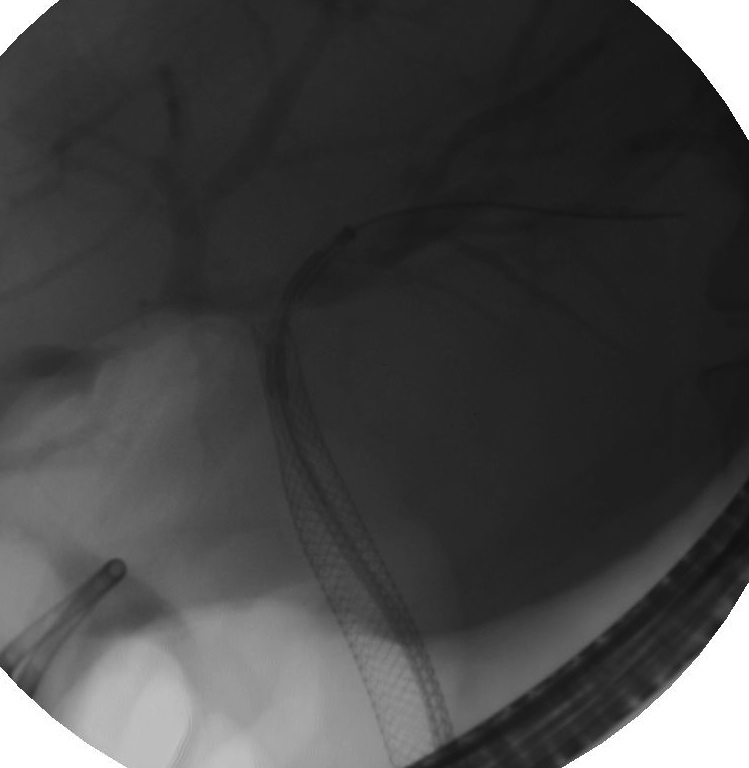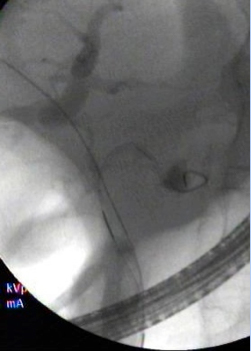Bile Duct Cancer
Cancer can develop in the bile ducts (also known as "cholangiocarcinoma"), which carry bile from the liver to the small intestine to help digest fat. The cancer often blocks the ducts. A clogged or blocked bile duct can cause pain and other uncomfortable symptoms.
Bile duct cancer is rare and very serious. That's why it should be treated by a team of experts. The specialists at the Center for Advanced Digestive Care (CADC) of NewYork-Presbyterian/Weill Cornell Medical Center have extensive experience treating bile duct cancer, including the use of surgical, radiologic and advanced endoscopic approaches to relieve obstructed ducts and improve patients' quality of life. Patients may also have access to clinical trials of new molecular and targeted treatments as well as new surgical and endoscopic procedures to relieve symptoms and try to improve the survival rate for bile duct cancer.
Symptoms of Bile Duct Cancer
Bile duct cancer may cause the following symptoms:
- Jaundice (yellowing of the skin)
- Fever
- Itching
- Loss of appetite
- Weight loss
- Upper abdominal pain radiating into the back
- Chills
Diagnosis of Bile Duct Cancer
The following diagnostic tests may be performed to diagnose bile duct cancer:
- Imaging tests such as CT scanning and magnetic resonance imaging (MRI)
- Endoscopic retrograde cholangiopancreatography (ERCP): An advanced procedure which combines x-rays and the use of an endoscope and may be used to obtain a tissue sample.
- Endoscopic ultrasound (EUS) with fine-needle aspiration to biopsy tissue: EUS involves the use of a special endoscope with high-energy sound waves ("echoendoscope") to visualize the digestive tract and nearby organs.
- Choledochoscopy: Another highly specialized endoscopic technique to visualize the common bile duct.
- Probe-based confocal endomicroscopy: A small microscope is used to analyze cells to determine if they are normal or precancerous. Cancerous tissue may be immediately removed through the endoscope for further examination. The CADC is one of few centers offering this highly specialized approach.
- Narrow band imaging of the bile ducts: With this endoscopic technique, doctors use a special system to capture high-resolution images of the bile ducts without the use of dyes. NBI relies on the fact that light of different wavelengths penetrates tissue at different depths. The longer the wavelength, the deeper the tissue penetration. Blue light penetrates superficially, while red light penetrates more deeply. By using light of different wavelengths, doctors can see fine features of the bile ducts.
Treatment of Bile Duct Cancer

Our specialists are experienced in diagnosing and treating bile duct cancer. An interdisciplinary team of gastrointestinal specialists in endoscopy, radiology, and surgery work together as a team to provide each patient with coordinated, advanced, and individualized care.
Surgical Treatments And Transplantation
Surgery to remove the tumor is a common treatment for bile duct cancer and can cure some patients. If found early enough, surgery can cure some patients. If a tumor blocks the bile duct, a small tube called a stent may help with drainage through the duct.
If the tumor is very large, the entire liver may need to be removed, and the patient will need a liver transplant. NewYork-Presbyterian has a distinguished track record for liver transplantation and features a team of world-renowned leaders in the field. The Center for Liver Disease and Transplantation offers a seamless integration of services, using both deceased and living donor liver tissue and minimally invasive laparoscopic techniques whenever possible to achieve excellent outcomes.
Advanced Interventional Endoscopy

Our endoscopy specialists employ novel technologies to treat bile duct cancers, including:
- ERCP with stent placement to open a narrowed bile duct and improve quality of life in patients with advanced disease. This procedure must be performed by an advanced interventional endoscopist proficient in using this approach.
- ERCP guided by EUS to relieve obstructions in the bile ducts caused by cholangiocarcinoma, and to relieve jaundice in patients when the tumor cannot be removed.
- Laser therapy combined with light-activated chemotherapy medications ("photodynamic therapy").
- Radiofrequency ablation, which uses high-energy radio waves to treat inoperable bile duct cancers and reduce pain and other symptoms.
To learn more about these procedures, visit the Advanced Interventional Endoscopy page.
To schedule an appointment, call the Center for Advanced Digestive Care at



